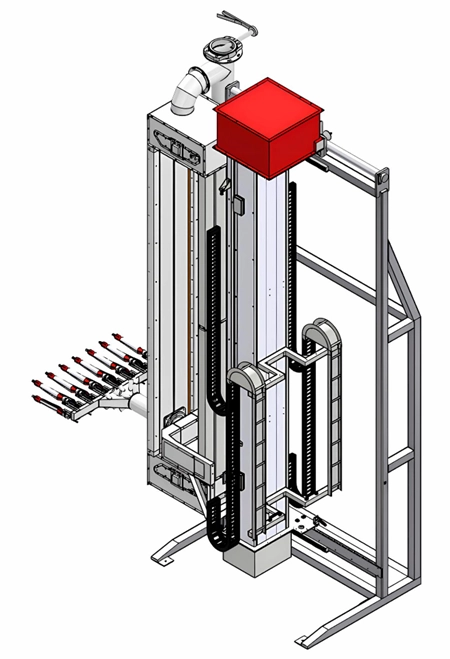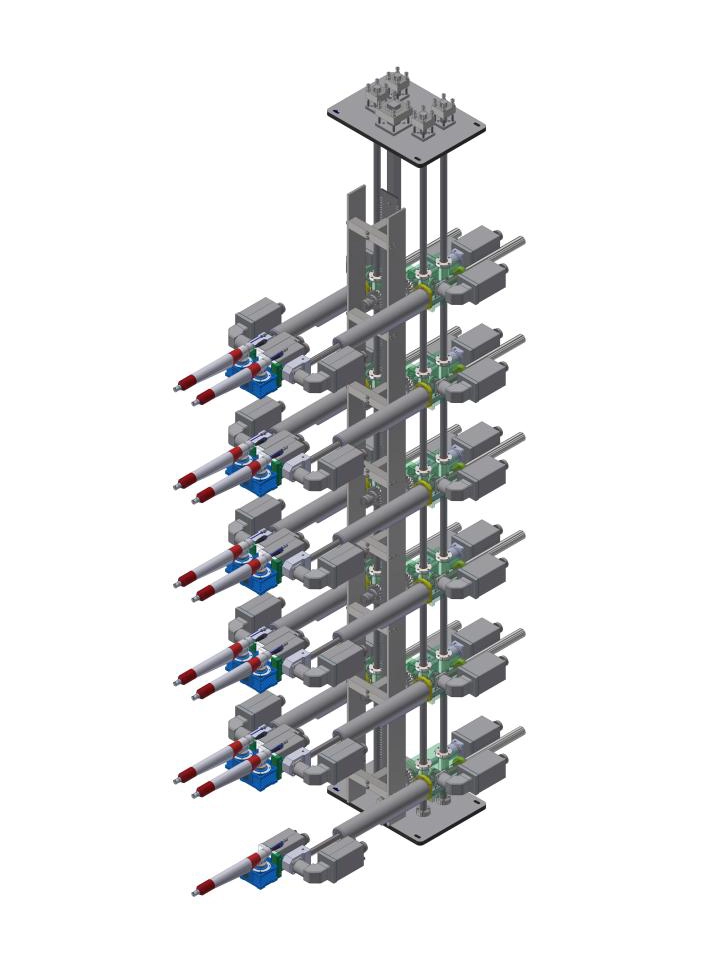Content Menu
● What Is a Spray Gun?
>> Basic Components of a Spray Gun
● Types of Spray Guns
>> Conventional Spray Guns
>> High Volume Low Pressure (HVLP) Spray Guns
>> Low Volume Low Pressure (LVLP) Spray Guns
>> Electrostatic Spray Guns
● Key Features That Distinguish Spray Guns
>> Nozzle Size and Shape
>> Air Pressure Requirements
>> Paint Feed System
>> Material Compatibility
● Applications and Industry Considerations
>> Automotive Industry
>> Woodworking and Furniture
>> Industrial Coatings
● Maintenance and Longevity Differences
>> Cleaning Procedures
>> Replacement Parts and Upgrades
● Cost Differences Among Spray Guns
● Conclusion: Not All Spray Gun Units Are the Same
● Frequently Asked Questions (FAQs)
Spray guns are essential tools in various industries such as automotive, woodworking, and manufacturing, but not all spray gun units are created equal. Understanding the differences among spray guns helps users choose the right equipment for their specific needs, ensuring better finish quality and efficiency. This article explores various types of spray guns, their key features, and important factors that set them apart.

What Is a Spray Gun?
A spray gun is a device that atomizes paint, lacquer, or other coatings and projects them onto a surface for a smooth, even finish. Spray guns rely on different mechanisms to atomize and deliver the coating material, making them versatile in numerous applications.
Basic Components of a Spray Gun
- Nozzle: Controls the shape and size of the spray pattern.
- Air Cap: Helps atomize the coating by mixing it with compressed air.
- Fluid Tip: Allows coating materials to flow out smoothly.
- Trigger: Controls the release of coating.
- Paint Cup: Holds the coating material, can be gravity-fed or pressure-fed.
Types of Spray Guns
Spray guns are generally classified based on the atomization method and the way paint is fed into the gun. Each type offers distinct advantages depending on the project.
Conventional Spray Guns
Conventional spray guns atomize paint using compressed air, creating a wide spray pattern. They are common in automotive and industrial finishing.
Pros:
- Wide availability
- Good finish quality on various surfaces
- Easy to clean and maintain
Cons:
- Higher overspray and paint wastage
- Requires more air pressure
High Volume Low Pressure (HVLP) Spray Guns
HVLP spray guns use a high volume of air but at a low pressure to atomize paint. They offer precise control and reduce overspray.
Pros:
- More efficient paint transfer rate
- Less overspray, environmentally friendly
- Ideal for detailed work and fine finishes
Cons:
- Slower material delivery compared to conventional guns
- Can struggle with thicker coatings
Low Volume Low Pressure (LVLP) Spray Guns
LVLP guns use less air volume and maintain lower pressure. They are efficient for small-scale jobs or hobbyists.
Pros:
- Very low overspray
- Easy to handle and control
- Suitable for thin to medium coatings
Cons:
- Not ideal for large surface projects
- Requires a compatible air compressor
Electrostatic Spray Guns
Electrostatic spray guns use electrical charges to attract paint particles to the work surface, increasing transfer efficiency.
Pros:
- High transfer efficiency, minimizing waste
- Excellent for complex shapes
- Superior finish quality
Cons:
- Higher initial cost
- Requires specific setup and training
Key Features That Distinguish Spray Guns
Several factors differentiate spray guns beyond their types, affecting performance and suitability for specific tasks.
Nozzle Size and Shape
Nozzle diameter controls the paint flow rate and spray pattern size. Smaller nozzles suit fine finishes and thin materials, while larger nozzles accommodate thicker coatings and faster coverage.
Air Pressure Requirements
Spray guns have varying air pressure demands, influencing the type of air compressor needed. High pressure tools require more powerful compressors, while LVLP guns operate on smaller compressors.
Paint Feed System
- Gravity-feed: Paint cup located above the gun, using gravity to feed paint to the nozzle. Efficient in reducing paint wastage.
- Siphon-feed: Paint cup below the gun; uses air pressure to draw paint up. More common but less efficient.
- Pressure-feed: Uses external pressure to force paint into the gun, ideal for larger projects.
Material Compatibility
Some spray guns work better with specific coating materials like lacquers, primers, or heavy paints. Knowing material compatibility is critical to achieving the desired finish without damaging equipment.
Applications and Industry Considerations
Choosing the right spray gun depends heavily on the industry application and project requirements.
Automotive Industry
Precision and high-quality finishes are crucial. HVLP and electrostatic guns are preferred for reducing overspray and achieving smooth surfaces on vehicle bodies.
Woodworking and Furniture
LVLP and HVLP guns offer excellent control for delicate wood finishes and varnishes, minimizing runs and ensuring even coats.
Industrial Coatings
Conventional and pressure-feed guns are common for large-scale industrial applications, where speed and material capacity are priorities.
Maintenance and Longevity Differences
Spray guns differ in terms of durability, ease of maintenance, and part replacement availability. HVLP and electrostatic guns may require more careful cleaning due to their sophisticated designs, while conventional guns are simpler and more rugged.
Cleaning Procedures
Proper cleaning extends spray gun life and performance. Cleaning the fluid tip, nozzle, and air cap after each use prevents clogging and uneven spraying.
Replacement Parts and Upgrades
Some spray guns allow interchangeable nozzles and air caps for customization, while others have fixed components.
Cost Differences Among Spray Guns
Price ranges widely depending on type, brand, and features.
- Conventional spray guns tend to be more affordable.
- HVLP guns offer a balance of cost and efficiency.
- Electrostatic guns are the most expensive due to advanced technology.
Conclusion: Not All Spray Gun Units Are the Same
Understanding the types of spray guns, their features, and their applications helps professionals and hobbyists select the right tool for their needs. Factors like nozzle size, air pressure requirements, paint feed method, and intended use impact overall performance. Choosing the correct spray gun ensures excellent finishes, material savings, and project success.

Frequently Asked Questions (FAQs)
1. What type of spray gun is best for beginners?
LVLP spray guns are ideal for beginners due to their low air pressure requirements and easy control.
2. Can I use the same spray gun for different paint types?
Not all spray guns are compatible with every paint type; always check the manufacturer's recommendations for material compatibility.
3. How often should I clean my spray gun?
Clean the spray gun immediately after each use to prevent clogging and ensure consistent performance.
4. Is an electrostatic spray gun worth the investment?
Yes, for complex projects requiring high efficiency and minimal waste, electrostatic spray guns provide excellent results but at a higher cost.
5. What factors affect the quality of the sprayed finish?
Nozzle size, air pressure, paint viscosity, and spray technique all affect the finish quality.
Hot Tags: China, Global, OEM, private label, manufacturers, factory, suppliers, manufacturing company










































 .
.
